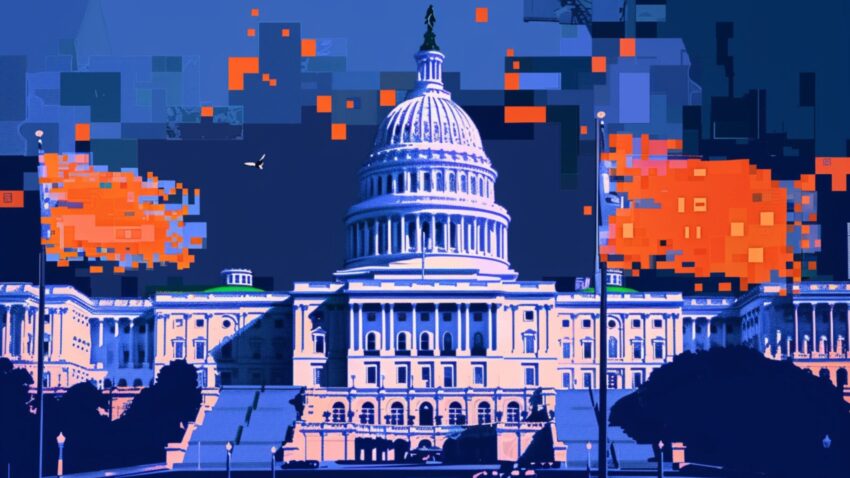If you’re tired of censorship and dystopian threats against civil liberties, subscribe to Reclaim The Net.
A new Senate bill designed to strengthen online privacy protections for minors could bring about major changes in how age is verified across the internet, prompting platforms to implement broader surveillance measures in an attempt to comply with ambiguous legal standards.
The Children and Teens’ Online Privacy Protection Act (S.836) (COPPA 2.0), now under review by the Senate Commerce Committee, proposes raising the protected age group from under 13 to under 17. It also introduces a new provision allowing teens aged 13 to 16 to consent to data collection on their own.
The bill has drawn praise from lawmakers across party lines and received backing from several major tech companies.
We obtained a copy of the bill for you here.
Supporters frame the bill as a long-overdue update to existing digital privacy laws. But others argue that a subtle change in how platforms are expected to identify underage users may produce outcomes that are more intrusive and far-reaching than anticipated.
Under the current law, platforms must act when they have “actual knowledge” that a user is a child.
The proposed bill replaces that threshold with a broader and less defined expectation: “knowledge fairly implied on the basis of objective circumstances.” This language introduces uncertainty about what constitutes sufficient awareness, making companies more vulnerable to legal challenges if they fail to identify underage users.
Instead of having to respond only when given explicit information about a user’s age, platforms would be required to interpret behavioral cues, usage patterns, or contextual data. This effectively introduces a negligence standard, compelling platforms to act preemptively to avoid accusations of noncompliance.
As a result, many websites may respond by implementing age verification systems for all users, regardless of whether they cater to minors. These systems would likely require more detailed personal information, including government-issued identification or biometric scans, to confirm users’ ages.
More: The Digital ID and Online Age Verification Agenda
Mandatory age verification carries significant risks. Systems that request sensitive documentation create new pools of personal data that can be targeted by attackers, misused internally, or sold for commercial gain. Once uploaded, personal information becomes subject to opaque storage and retention practices, often beyond the user’s control or awareness.
No method currently in use for verifying age balances reliability with privacy protection. Facial analysis tools and ID upload mechanisms are prone to errors and require the collection of intrusive data. Systems that offer users different verification options do not eliminate the underlying vulnerabilities; they shift where and how those vulnerabilities appear.
Without a comprehensive national data privacy framework, users remain exposed. There are no federal requirements mandating clear limits on data retention, transparency around third-party access, or redress mechanisms for misuse. This absence of structural privacy safeguards undermines the very protections that the bill aims to strengthen.
When access to online services depends on passing an age check, some users will choose not to engage at all. Public forums, creative platforms, and educational resources may become inaccessible unless users agree to verification procedures. This introduces a barrier to speech and participation that affects more than just teenagers.
Age-gating policies can create a chilling effect, especially in communities where anonymity plays a role in safety or free expression. The more sensitive the verification process, the more likely it is to dissuade users from contributing content or seeking out information.
This reconfiguration of access doesn’t appear in the text of the bill, but it is the logical result of shifting legal obligations onto platforms without providing clear enforcement boundaries or privacy protections for the resulting data flows.
Though the bill’s authors intend to update a law passed more than two decades ago, the proposed mechanism places the burden on platforms to make risk-averse decisions without clear guidance. The cost of avoiding liability could lead to invasive systems that erode online privacy for all users.
Efforts to protect minors online deserve serious legislative attention, but those efforts require precise definitions and strong, enforceable rights over personal data. Expanding the scope of regulated users while weakening the clarity of legal standards invites overreach and exposes everyone to new forms of digital scrutiny.
The direction of this bill signals an approach that outsources responsibility to platforms while leaving users with fewer protections and more demands. Until federal privacy legislation is passed that addresses the broader environment of data collection and surveillance, piecemeal reforms like S.836 will continue to produce complex and far-reaching consequences.
If you’re tired of censorship and dystopian threats against civil liberties, subscribe to Reclaim The Net.
The post COPPA 2.0: The Age Check Trap That Means Surveillance for Everyone appeared first on Reclaim The Net.
Click this link for the original source of this article.
Author: Ken Macon
This content is courtesy of, and owned and copyrighted by, https://reclaimthenet.org and its author. This content is made available by use of the public RSS feed offered by the host site and is used for educational purposes only. If you are the author or represent the host site and would like this content removed now and in the future, please contact USSANews.com using the email address in the Contact page found in the website menu.





